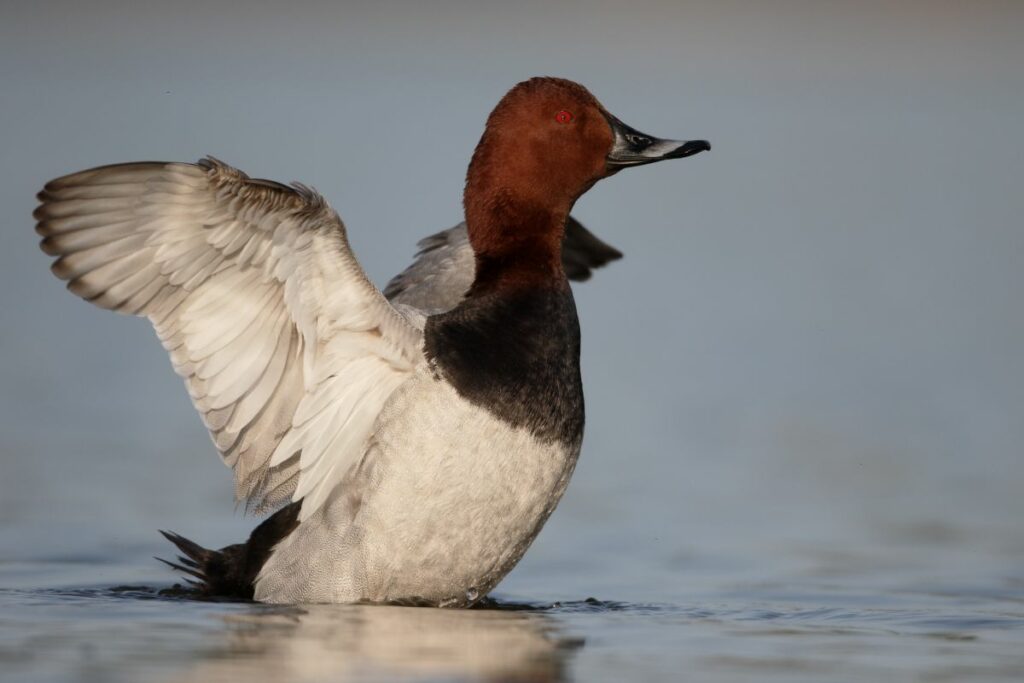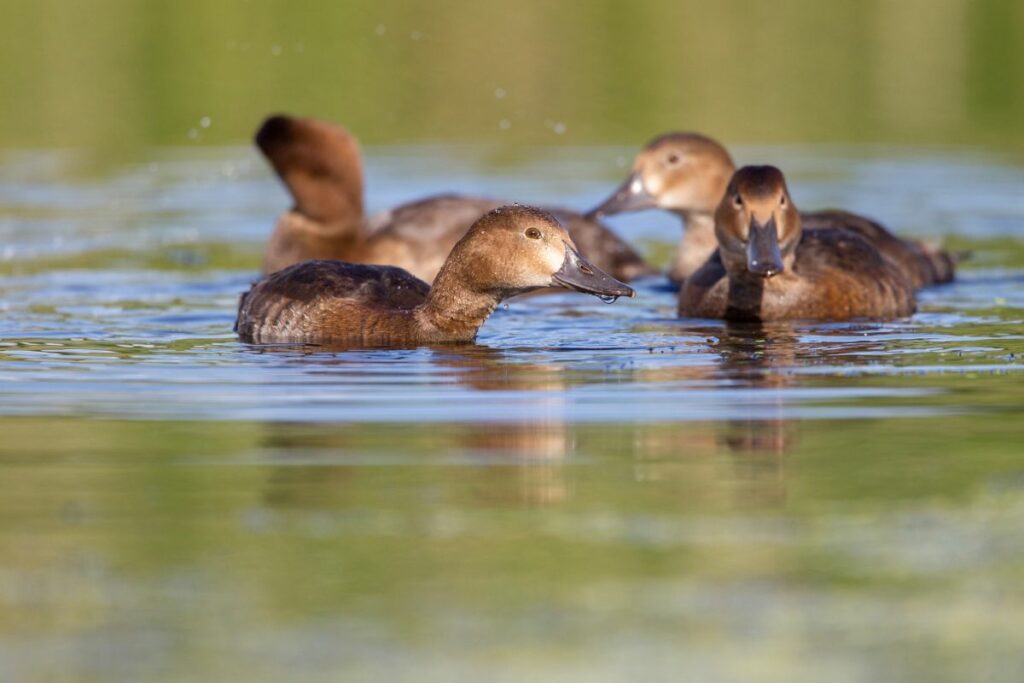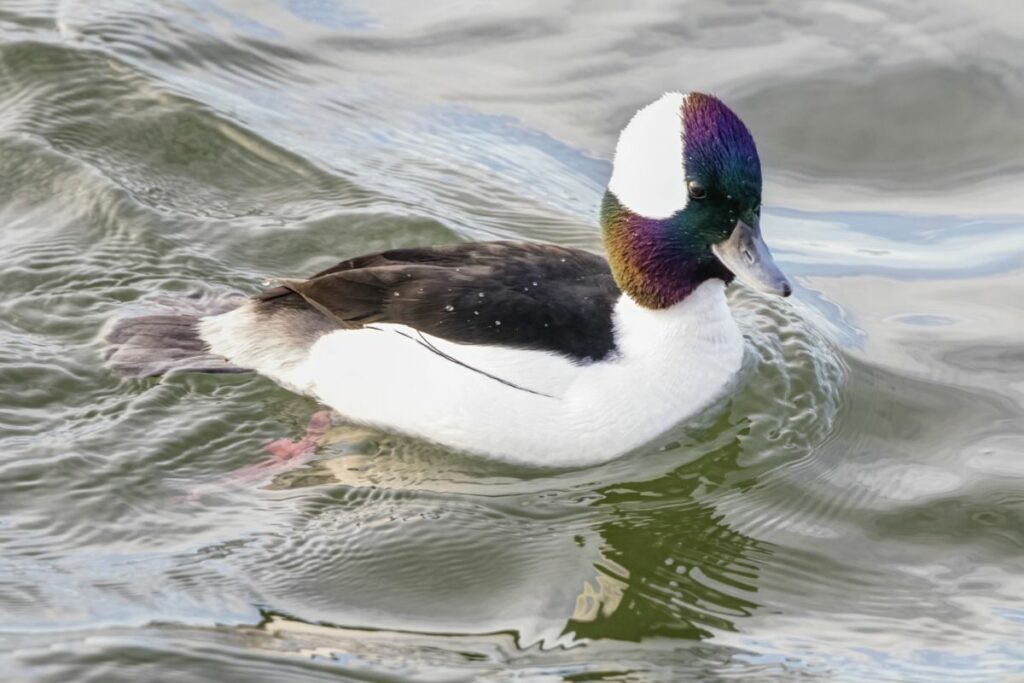Diving ducks are a group that researchers use to categorize certain duck species. The name comes from the way these ducks feed, which involves them diving below the water’s surface.
So, what does it mean if a species is a “diving duck”? Which ducks fall under this category? Keep reading to find out!
What are Diving Ducks?

Most duck species are split into one of two types: dabbling and diving ducks. Dabbling ducks are more common than diving ducks, but there are plenty of common diving duck species worldwide.
“Divers” refers to any ducks that submerge themselves completely underwater when looking for food. They will swim quickly toward the bottom of the water and scoop up any plants and invertebrates they can find.
Some diving ducks only grab a few sedentary food items while others might chase prey while underwater. They differ from dabbling ducks because dabblers only feed off prey near the water’s surface, so they can float on top while doing so.
Diving birds may dabble too, but they are more likely to dive. So, if you see a duck disappear underwater for a short period, it’s likely a a diving duck species.
Diving Ducks Identification
Every species of diving duck looks different, but there are some physical characteristics that can help you identify them.
Overall, diving ducks are more compact than dabblers. Their bodies are widest in the middle, and then they get narrower on both ends. Their feet are also situated further back on their bodies since they spend more time in the water than on land. The feet on these ducks are also wider to help them swim better.
Their wings are smaller than dabblers too. That way, they can compress their wings tighter against their body when they dive. Since their wings are small, they cannot take off into flight from the water. Instead, they need a running start before flying.
How Do Diving Ducks Feed?

Diving ducks may occasionally forage on land and dabble in the water, but their primary feeding method is diving. They start by floating on the water’s surface. When they prepare to dive, they compress their feathers against their body to make less air in between their feathers, which reduces their buoyancy.
Then, the ducks thrust their legs with one powerful motion to propel themselves underwater. They use their large webbed feet to move deeper into the water in search of food. They can reach 10 to 65 feet below the surface. While other types of ducks stay underwater for 30 seconds or less, most diving ducks can hold their breath for at least a minute.
When the ducks near the substrate at the bottom of the water, they use their feet to hover in place as they grab food. They may seek out a variety of plants and animals, including aquatic insects, mollusks, seeds, tubers, and roots.
Diving ducks will forage both day and night. If they dive during nighttime, they tend to stay underwater for longer. Most of a duck’s time underwater consists of them swimming down and up, so they need to be quick when collecting food at the bottom.
To return to the surface, the ducks relax their muscles and stop moving their feet, causing them to float back to the surface. Ducks feeding on sedentary prey will return to the same spot on the water’s surface, but ducks that followed moving prey may appear over 50 feet from where they went under.
How Do Diving Ducks Survive Underwater?
Diving ducks have special adaptations to help them survive the lack of oxygen in deep waters. They have a high tolerance for areas with less air, so they can reduce their oxygen intake when underwater.
When these birds go underwater, they ration their available oxygen so it goes to specific body parts, such as the central nervous system and sensory organs. Their heart rate and blood flow reduce in the process. The body parts act in that way when water interacts with receptors in the duck’s nostrils.
The ducks don’t rest long before diving again. Most diving ducks only wait about 10 to 30 seconds above water before going back under.
Diving Duck Species

There are at least 20 species of diving ducks, but any ducks that regularly feed by fully submerging themselves could fall into this category.
Here are some duck species that could be called divers:
- Black Scoter
- Bufflehead
- Canvasback
- Common Goldeneye
- Greater Scaup
- Harlequin Duck
- Hood Merganser
- King Eider
- Lesser Scaup
- Redhead Duck
- Ring-Necked Duck
Diving duck hybrids are possible, so researchers often get confused when they see a duck that doesn’t fit one specific species. Also, some of the species, such as canvasback and redhead ducks, have very minor physical differences. In those instances, you’ll need to focus on their head shape more than their coloring.
Frequently Asked Questions
Here are a few commonly asked questions about diving ducks.
Dabbling ducks rarely dive, but they’re capable of doing so. You may notice dabbling ducks briefly dive to grab food or escape predators, but it won’t be a regular part of their feeding routines.
No ducks are considered “waterproof” but diving ducks have feathers that are more water-resistant than terrestrial birds. When diving ducks clean themselves, their feathers get covered in preen oil to protect them from the water.
Yes, diving ducks can drown if they stay underwater for too long. However, it’s rare. Ducks don’t have the capability to breathe underwater, and most diving ducks don’t stay underwater for more than a minute. Diving ducks know when to return to the surface for air, but if they get stuck underwater, they could sadly drown like any other land animal.
Conclusion
Diving ducks are rarely kept in captivity, but they’re fascinating birds to observe. Their bodies are built different than dabblers, and they use their unique characteristics to dive under the water to find food.
Learning about these beautiful birds may help you understand your own flock better. So, even if you aren’t caring for diver ducks, learning about them can only help. Next time you see a wild duck, watch the behaviors closely to see if the duck is a diver or dabbler.
